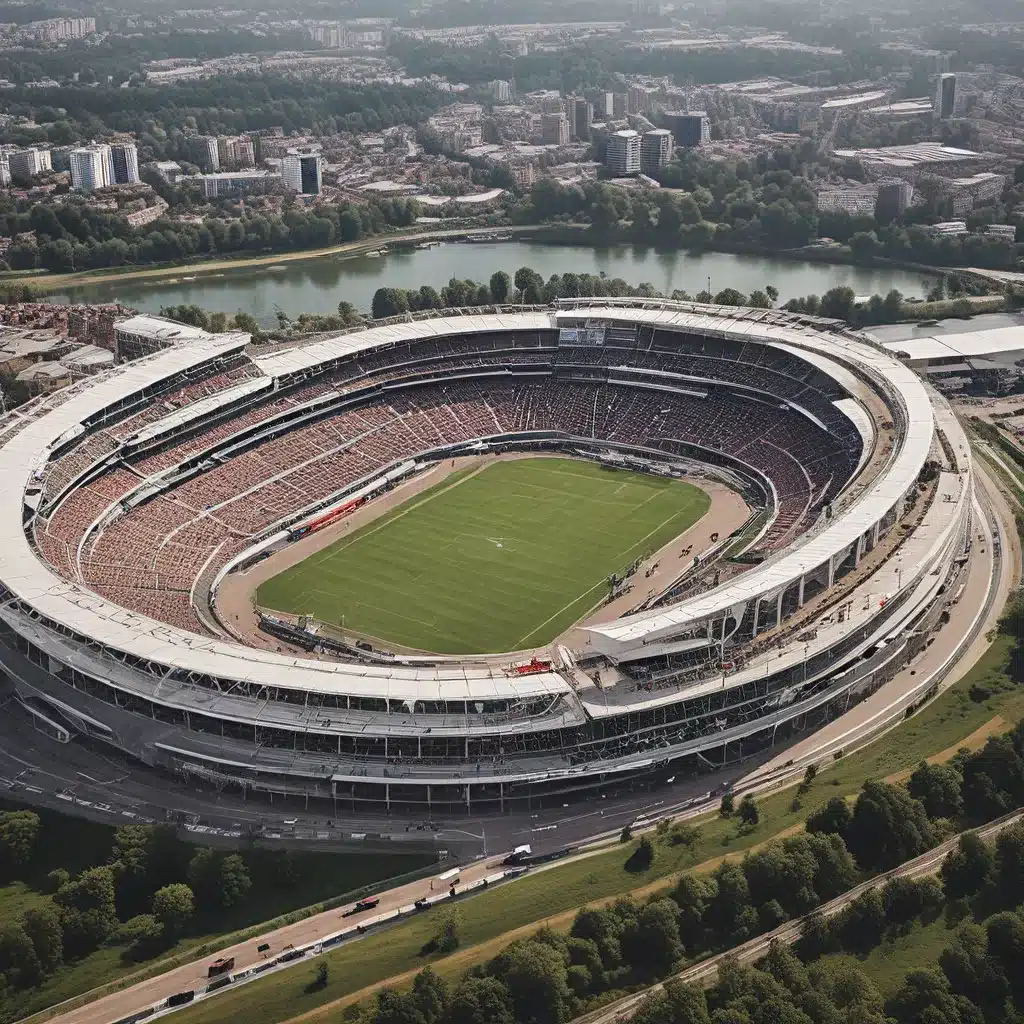
From the early days of auto racing to the modern era of high-speed spectacle, motorsport stadiums have been the stage for some of the most thrilling and memorable moments in sports history. These iconic venues have not only housed the intense rivalries and record-breaking performances of legendary drivers but have also evolved alongside the rapid technological advancements that have transformed the sport itself.
The Birth of Motorsport Stadiums
The origins of motorsport stadiums can be traced back to the early 20th century, when the growing popularity of automobile racing led to the need for dedicated facilities to host these events. One of the earliest and most renowned of these venues was the Indianapolis Motor Speedway, which first opened its doors in 1909. Constructed on the outskirts of Indianapolis, the Brickyard, as it came to be known, was designed with a unique 2.5-mile oval track that provided a challenging and high-speed environment for the era’s daring drivers.
As the sport of auto racing continued to gain traction, other stadiums began to emerge around the world, each with their own unique architectural and design features. In Europe, the Nürburgring in Germany, with its notorious “Green Hell” circuit, and the Monza racetrack in Italy, renowned for its high-speed straightaways, became legendary destinations for both drivers and spectators alike.
The Golden Age of Motorsport Stadiums
The mid-20th century marked a true golden age for motorsport stadiums, as the sport’s increasing popularity and technological advancements led to the construction of some of the most iconic and influential venues in history. One such example is the Nissan Sears Point Raceway (now known as Sonoma Raceway) in California, which opened in 1968 and quickly became a must-visit destination for NASCAR and IndyCar events.
Similarly, the Daytona International Speedway in Florida, which debuted in 1959, became synonymous with the thrilling and high-stakes world of stock car racing, hosting the prestigious Daytona 500 and cementing its place as one of the most recognizable motorsport stadiums in the world.
The Rise of Specialized Motorsport Facilities
As the sport of auto racing continued to evolve, so too did the stadiums that housed these events. In the late 20th century, a new generation of specialized motorsport facilities began to emerge, designed with the specific needs of different racing disciplines in mind.
One such example is the Hoquiam Olympic Stadium in Washington, which was originally built in 1938 as a multi-purpose venue but later became a hub for various forms of motorsport, including professional baseball and youth sports. The stadium’s unique L-shaped grandstand and all-wooden construction made it a one-of-a-kind facility that has stood the test of time.
Similarly, the Circuit of the Americas in Austin, Texas, which opened in 2012, was designed specifically to host Formula One events, with its challenging layout and state-of-the-art facilities catering to the needs of the world’s premier open-wheel racing series.
The Digital Transformation of Motorsport Stadiums
In the 21st century, the world of motorsport stadiums has undergone a remarkable digital transformation, with technology playing an increasingly pivotal role in enhancing the spectator experience and optimizing the operational efficiency of these iconic venues.
Streaming platforms and advanced data analytics have revolutionized the way fans engage with motorsport events, allowing them to access real-time information, immersive video content, and personalized experiences that bring them closer to the action than ever before.
Moreover, the integration of cutting-edge technologies, such as augmented reality and Internet of Things (IoT) sensors, has enabled motorsport stadiums to streamline operations, optimize crowd management, and enhance the overall safety and security of their facilities. These innovations have not only improved the fan experience but have also played a crucial role in shaping the future of the sport.
The Enduring Legacy of Motorsport Stadiums
As the world of motorsport continues to evolve, the legacy of these iconic stadiums remains a testament to the passion, innovation, and unwavering dedication that have defined the sport throughout its history. From the historic Indianapolis Motor Speedway to the cutting-edge Circuit of the Americas, these venues have served as the stage for some of the most thrilling and memorable moments in sports, captivating audiences around the world and inspiring the next generation of racing enthusiasts.
By visiting the website of Old Stadium Journey, readers can explore the rich history and enduring significance of motorsport stadiums, as well as discover new and exciting venues that are continuing to push the boundaries of what’s possible in the world of auto racing.
